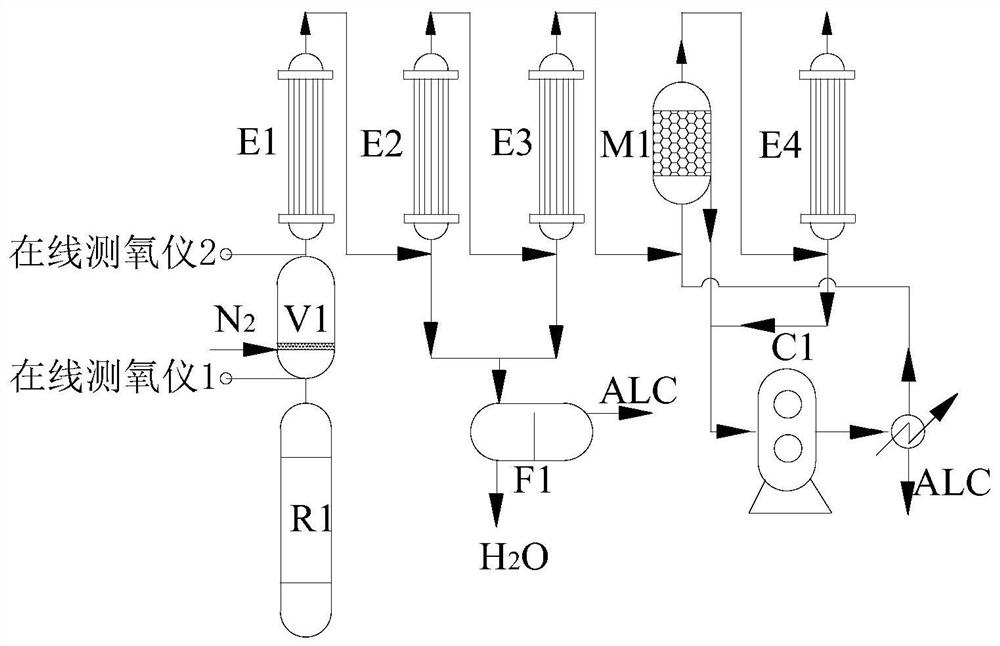A method for treating waste gas produced in the process of producing epichlorohydrin by epoxidation of propylene chloride
A technology of epichlorohydrin and treatment method, which is applied in the field of petrochemical industry, and can solve problems such as not being able to meet the requirements of organic tail gas treatment
- Summary
- Abstract
- Description
- Claims
- Application Information
AI Technical Summary
Problems solved by technology
Method used
Image
Examples
Embodiment 1
[0038] Set the condensing temperature of the first-stage condenser (E1) to 7°C, the condensing temperature of the second-stage condenser (E2) to 1°C, the condensing temperature of the third-stage condenser (E3) to be -5°C, and the condensing temperature of the fourth-stage condenser (E4) to be The temperature was -45°C.
[0039] The CN206304715U reactor is integrated with the treatment device of the method for producing waste gas from the epoxidation of chloropropene to produce epichlorohydrin provided by this patent, and the reaction tail gas is taken from the position of the online oxygen measuring instrument (1), and the sample is analyzed by laboratory analysis. The content of allyl chloride is 93.2v%, the water vapor is 0.3v%, the oxygen content measured by the online oxygen meter (1) is 4.5v%, and the content of allyl chloride in the exhaust gas is outside the explosion limit of allyl chloride (2.9v%~11.2v%) .
[0040]After adding nitrogen gas from the gas distributor a...
PUM
 Login to View More
Login to View More Abstract
Description
Claims
Application Information
 Login to View More
Login to View More - R&D
- Intellectual Property
- Life Sciences
- Materials
- Tech Scout
- Unparalleled Data Quality
- Higher Quality Content
- 60% Fewer Hallucinations
Browse by: Latest US Patents, China's latest patents, Technical Efficacy Thesaurus, Application Domain, Technology Topic, Popular Technical Reports.
© 2025 PatSnap. All rights reserved.Legal|Privacy policy|Modern Slavery Act Transparency Statement|Sitemap|About US| Contact US: help@patsnap.com

